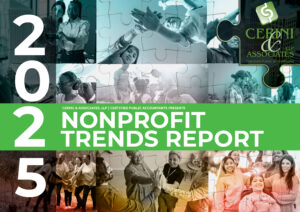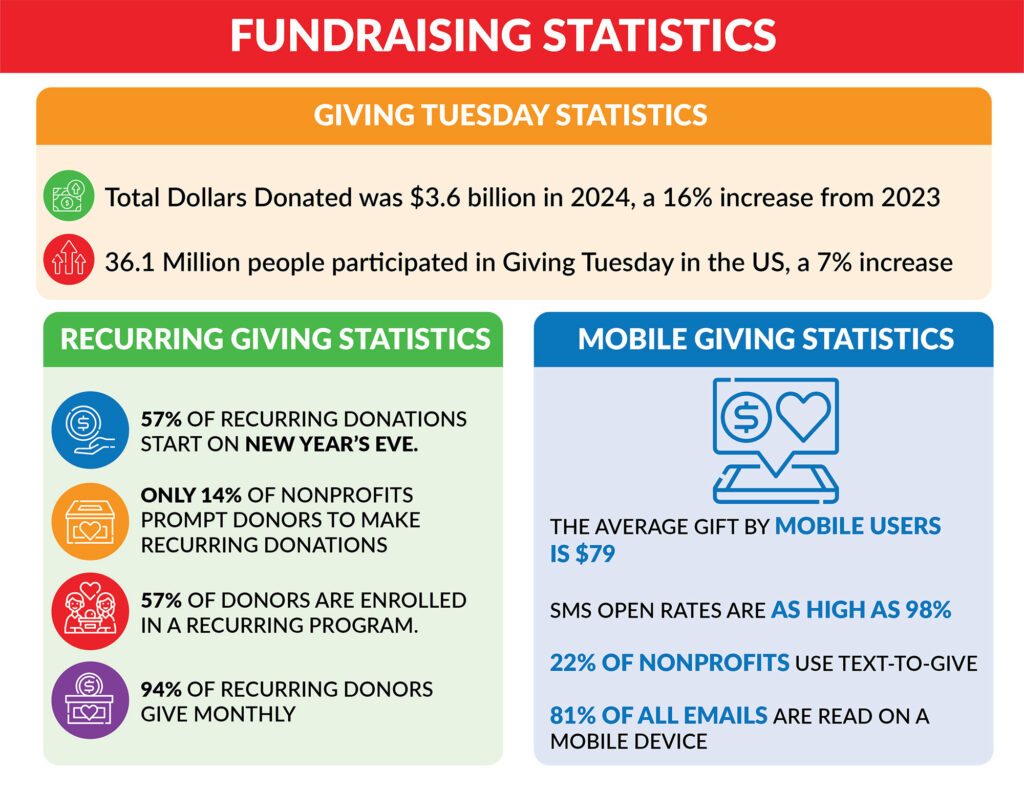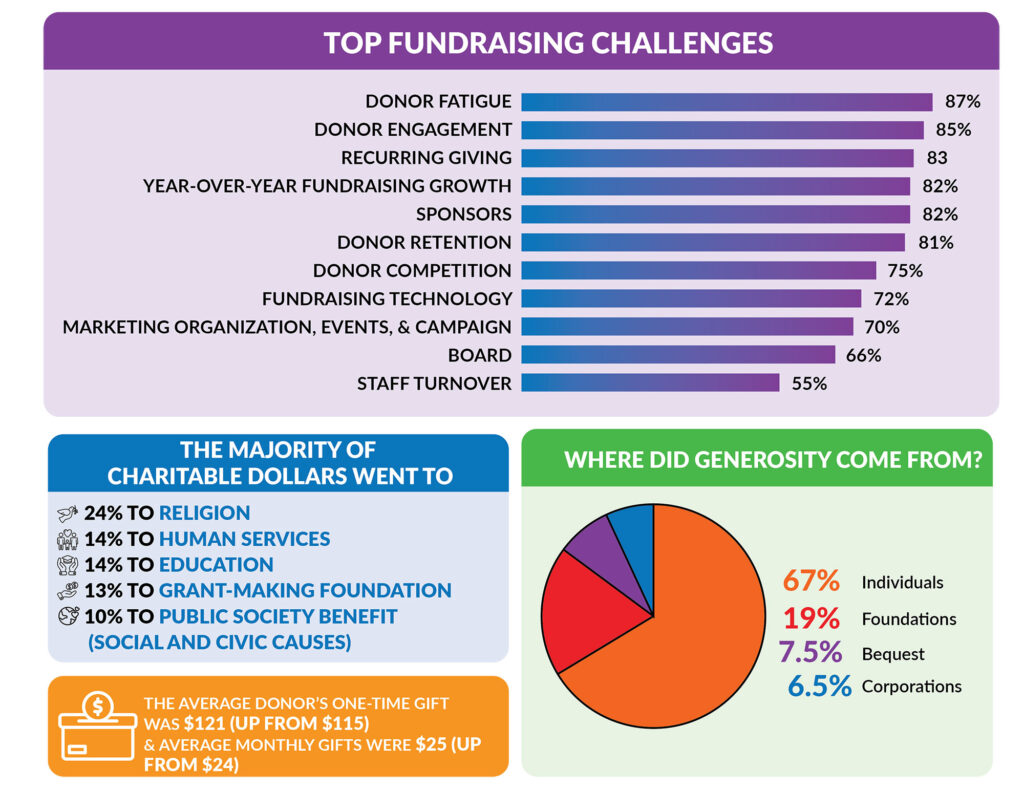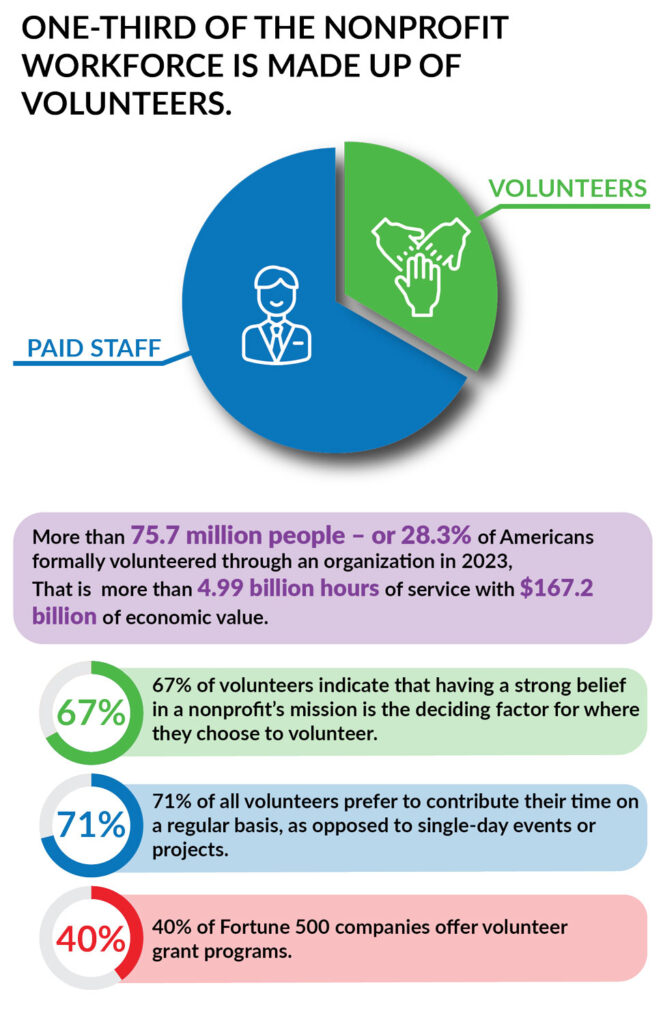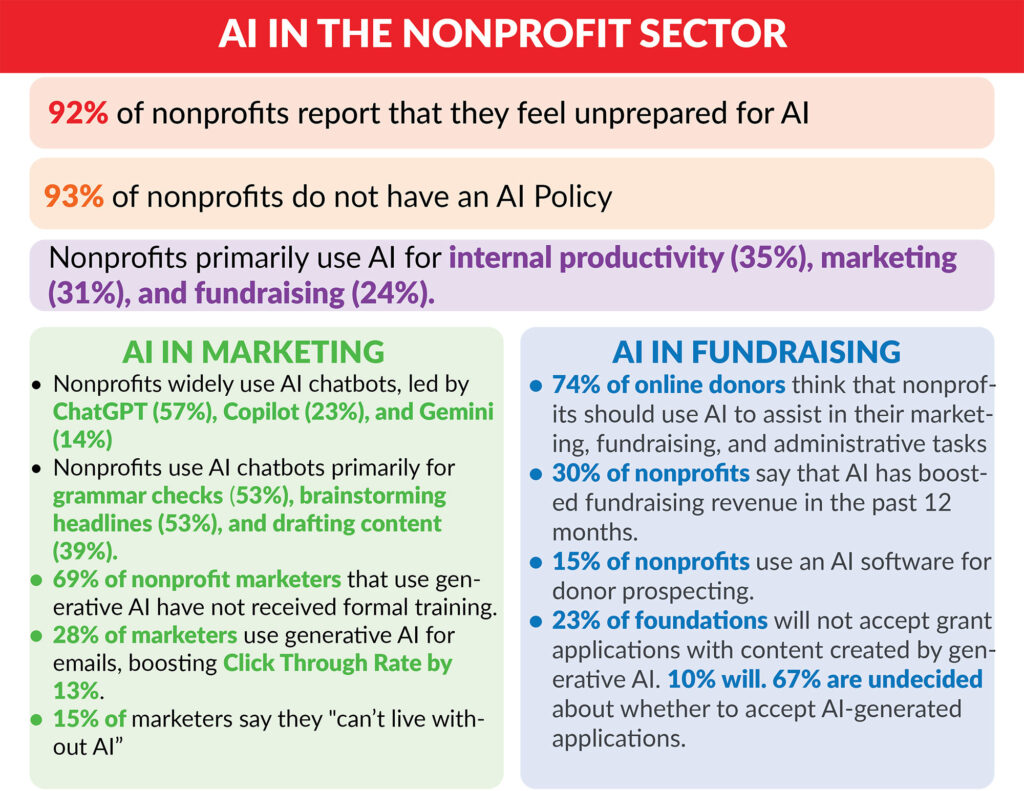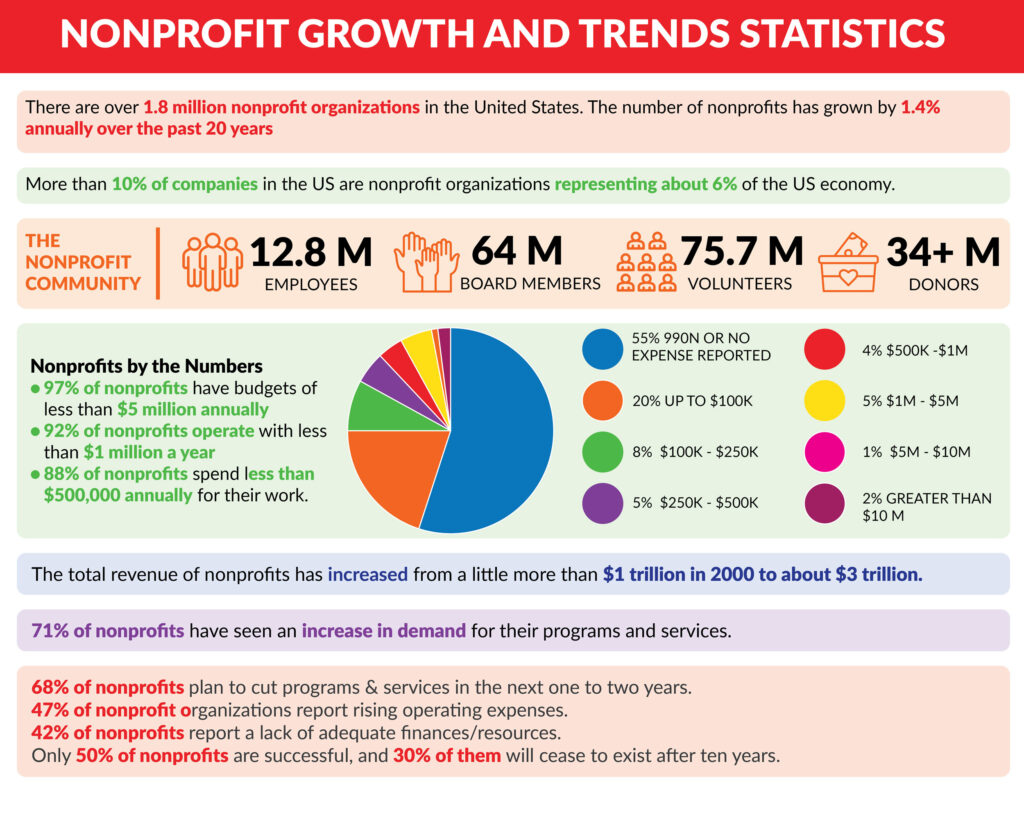As we move into 2025, nonprofit organizations face increasing competition for donor attention and support. To stay ahead, nonprofits must adapt to evolving marketing trends that drive engagement, build relationships, and amplify their mission. Research indicates that it can take 18–20 points of contact to reach a new donor, underlining the importance of a multi-channel, consistent marketing approach. By leveraging cutting-edge technologies, personalized storytelling, and data-driven strategies, nonprofits can maximize their outreach and impact.
Here’s a detailed look at the top nonprofit marketing trends for 2025:
1.) Email Marketing:
Personalized and Underutilized
Email remains one of the most effective tools for nonprofits, yet only 68% of organizations actively use it. With 30% of donors inspired to give via email, there’s immense potential to increase donor engagement through tailored campaigns.
Best Practices:
- Segmentation and Personalization: Target specific donor segments based on interests and past interactions to improve engagement.
- Pop-Ups and Visuals: Use email pop-ups on your website (only 28% of nonprofits do this) and visually compelling emails to boost subscriber rates and drive conversions.
- Automated Campaigns: Implement automated email campaigns to nurture donor relationships over time, boosting fundraising effectiveness.
2.) Social Media:
Inspiring Donations and Building Community
Social media remains crucial for donor engagement. Platforms like Instagram, TikTok, and Facebook enable nonprofits to engage audiences through shareable, interactive content. In 2025, incorporating video content, live streaming, and interactive posts will be key.
Key Strategies:
- Visual Content: Posts with images see 650% more engagement than text-only posts. Make use of visuals, behind-the-scenes content, and event promotions.
- Posting Frequency: Aim for 3–4 posts per week to maintain visibility and connection with your audience.
- Live Streaming and Polls: Engage with audiences in real-time to deepen interactions and provide updates on your work.
Content Types:
- Impact Stories: Share real-life stories that highlight the impact of donations and your organization’s work. This helps humanize your cause and builds an emotional connection with your followers.
- Behind-the-Scenes: Provide a glimpse into the daily operations and efforts of your team. This builds transparency and trust with your audience.
- Event Promotions: Announce and promote upcoming events to encourage participation. Create urgency and excitement around fundraising efforts and community gatherings.
- User-Generated Content: Share content created by your supporters to build community and trust. This can include testimonials, photos, and videos, which foster a sense of involvement.
- Live Updates: Use live streaming to engage with your audience in real-time and provide updates on ongoing projects or events. It allows for immediate interaction and fosters a deeper connection with your supporters.
3.) Google Ad Grants:
Amplifying Reach
Google Ad Grants provide nonprofits with up to $120,000 annually in free ad credits, which can significantly boost website traffic and raise awareness. With over 91% of global search engine traffic originating from Google, investing in SEO and Google Ads is a strategic way to attract new donors.
Benefits of Google Ad Grants:
- Increase website visibility and ranking in search results.
- Drive traffic to donation pages and specific campaigns.
- Reinforce your mission through targeted ads aligned with your services.
4.) Mobile Optimization:
A Necessity
With 52% of nonprofit website traffic coming from mobile devices, ensuring your website is mobile-friendly is essential.
Key Features to Focus On:
- Responsive Design: Ensure your site seamlessly adjusts to mobile and desktop views.
- User-Friendly Navigation: Simplify menus and optimize loading times for quick, easy access.
- Accessibility: Incorporate features that accommodate visitors with disabilities to ensure inclusivity.
5.) Storytelling:
Connecting Through Impact
Storytelling remains a powerful tool for nonprofits. Authentic, compelling stories about the individuals and communities you serve can inspire action and build trust.
2025 Trends in Storytelling:
- Multimedia Formats: Use videos, infographics, and photo essays to bring stories to life.
- Diverse Voices: Highlight multiple perspectives to reflect your mission authentically.
- Impactful Narratives: Share measurable outcomes and personal stories that show the real-world effects of your work.
6.) Artificial Intelligence (AI):
Enhancing Efficiency and Personalization
AI tools are revolutionizing nonprofit marketing by streamlining repetitive tasks and providing insights into donor behavior. From automating segmentation to personalizing communications, AI is becoming essential for nonprofits looking to optimize their outreach.
Applications for Nonprofits:
- Donor Segmentation: Automate the process of segmenting donors based on behavior and preferences.
- AI Chatbots: Use AI-driven chatbots to answer common donor questions, saving staff time.
- Personalized Content: Leverage AI to generate social media posts and donor thank-you messages.
7.) Integrated Campaigns:
Consistent Messaging Across Channels
Nonprofits should unify their marketing efforts across email, social media, their website, and print for a cohesive campaign strategy. A consistent message across all touchpoints reinforces your mission and builds deeper connections with your audience.
Why It Matters:
- Coordinated campaigns encourage action and increase donor conversion rates by reinforcing your message through multiple channels.
8.) Data-Driven Strategy:
Optimize for Success
Data analysis is vital for refining marketing strategies. Tracking key metrics like email open rates, website click-through rates, and social media interactions helps nonprofits make informed decisions and improve their outreach.
Best Practices:
- Regularly clean and update your donor data.
- Use tools like Funraise to collect and analyze data efficiently.
- Ensure compliance with data privacy laws to maintain donor trust.
9.) Building Strong Donor Relationships
Fostering lasting relationships with donors is critical for long-term success. In 2025, focus on personalized communication and providing regular updates on how donations are making an impact.
Ways to Strengthen Relationships:
- Personalized Outreach: Segment donors based on past giving behavior and send targeted messages.
- Impact Reporting: Share how donations are being used and the tangible results achieved.
- Appreciation: Regularly thank donors through creative methods like thank-you videos or donor appreciation events.
10.) Leveraging Influencer and Corporate Partnerships
Collaborating with influencers and corporate partners can help amplify your message. Influencers bring in new audiences, while corporate sponsors offer additional resources and credibility.
Benefits:
- Reach wider, often younger, audiences.
- Secure additional resources and support for campaigns.
11.) Video Marketing:
Dominating Engagement
Video content continues to dominate online engagement. Short, impactful videos can showcase your mission, events, and success stories in an easily shareable and memorable way.
Key Tips for Video Marketing:
- Use videos to tell your story in a visually engaging format.
- Share success stories and behind-the-scenes content to connect with viewers emotionally.
Embrace the Future of Nonprofit Marketing
Nonprofit marketing in 2025 will require organizations to embrace emerging technologies like AI, refine their storytelling techniques, and adopt data-driven strategies. By integrating these trends into your marketing efforts, your nonprofit can strengthen donor relationships, raise awareness, and ultimately increase impact in a highly competitive, digital-first world.
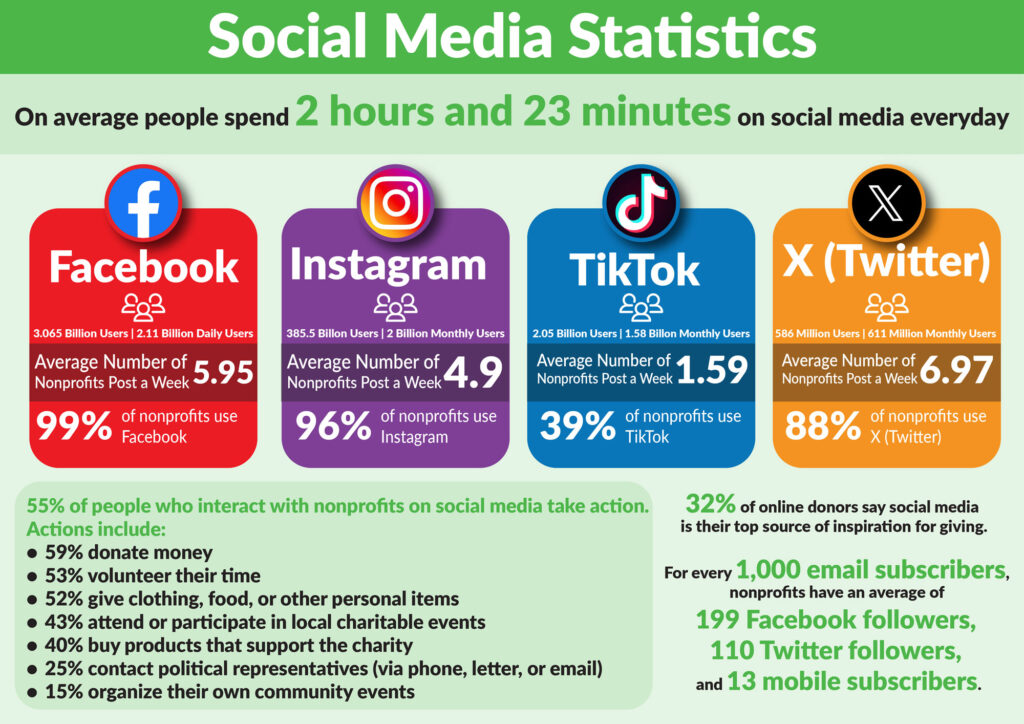
Kelli-Anne Cerini
Marketing Manager
Kelli-Anne is a Manager for Cerini & Associates’ marketing staff. She oversees all marketing and communications efforts for the firm. Kelli-Anne is heavily involved in firm operations, recruitment, and development. She work’s with the firm’s various services areas and management team to define and meet growth goals, as well as working to help organize and promote the Long Island and New York City Imagine Awards.


